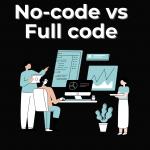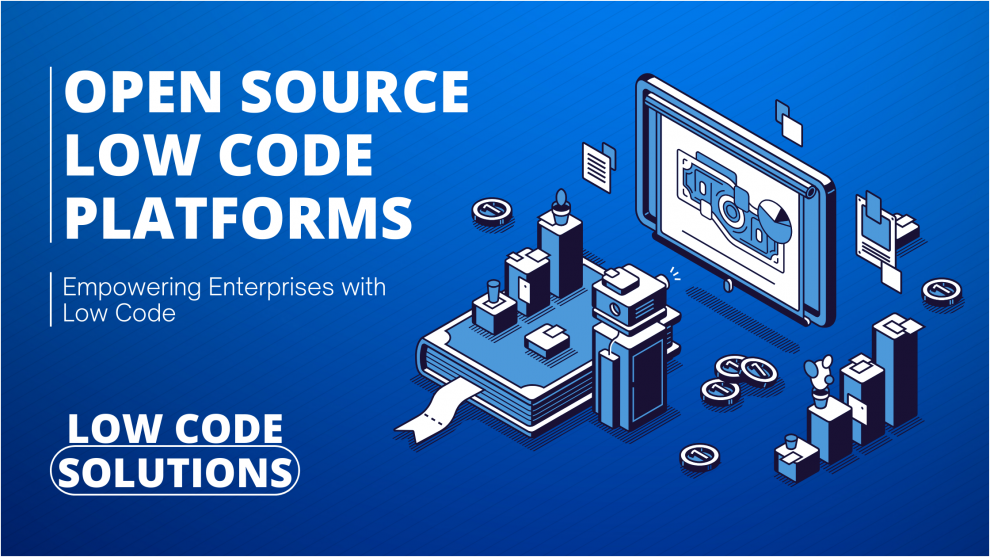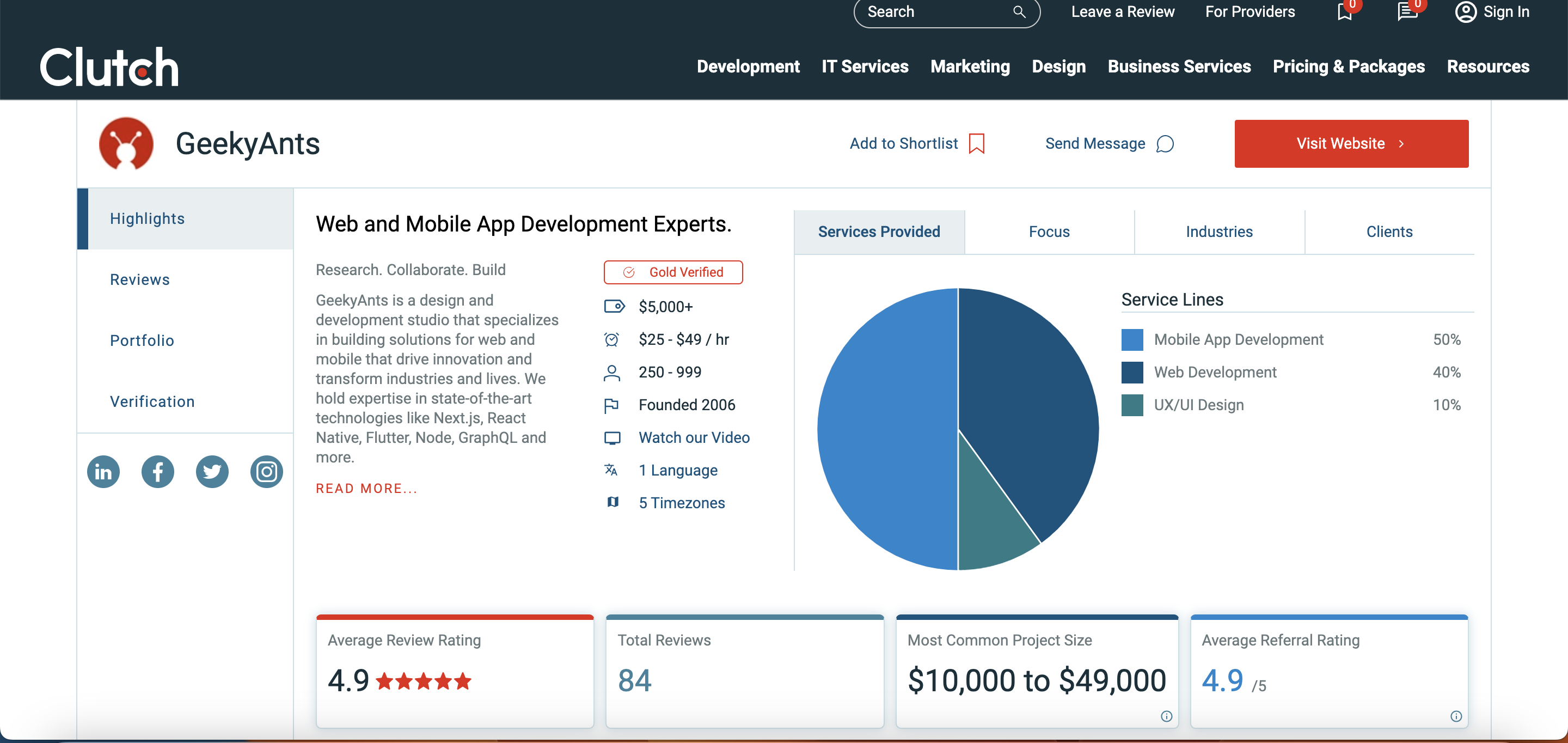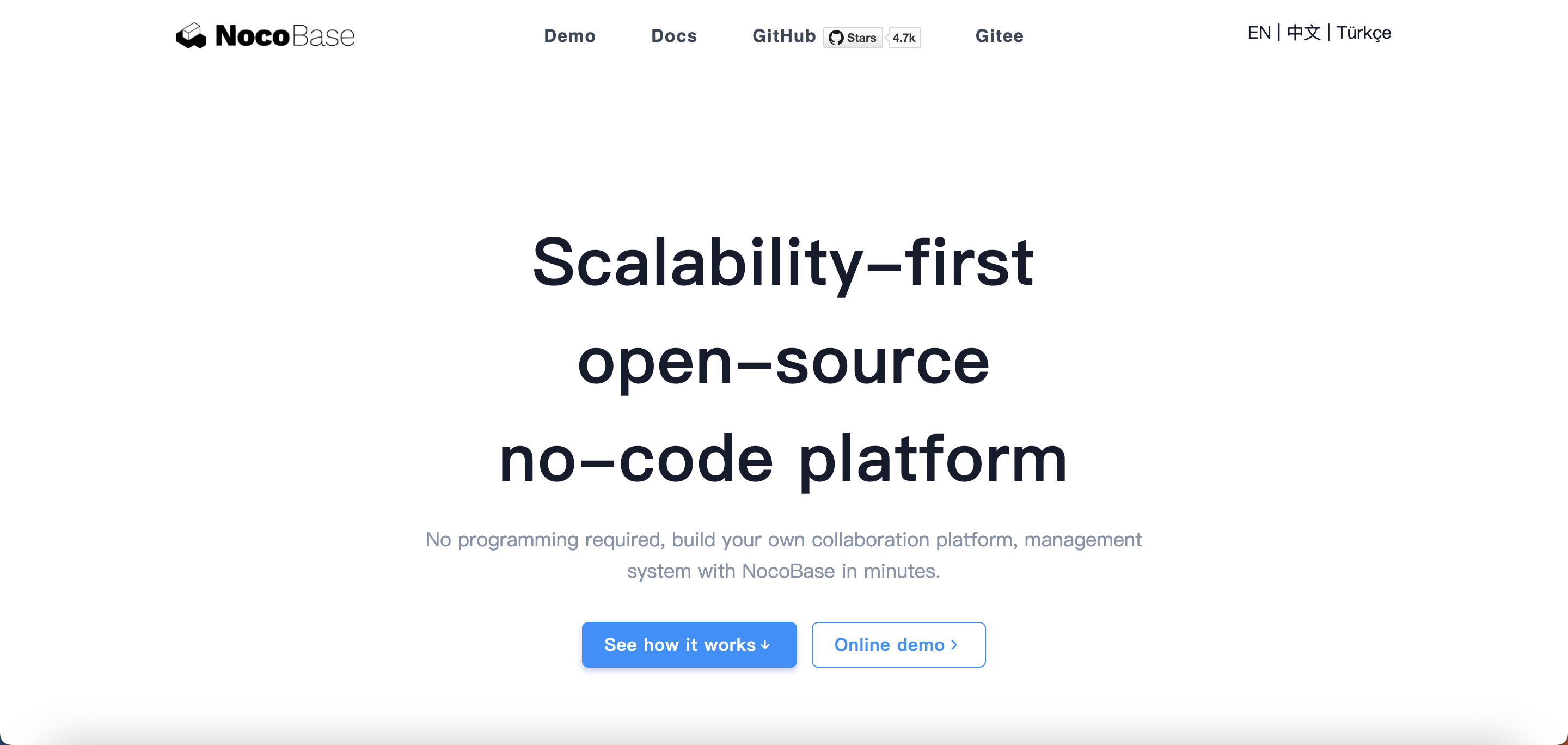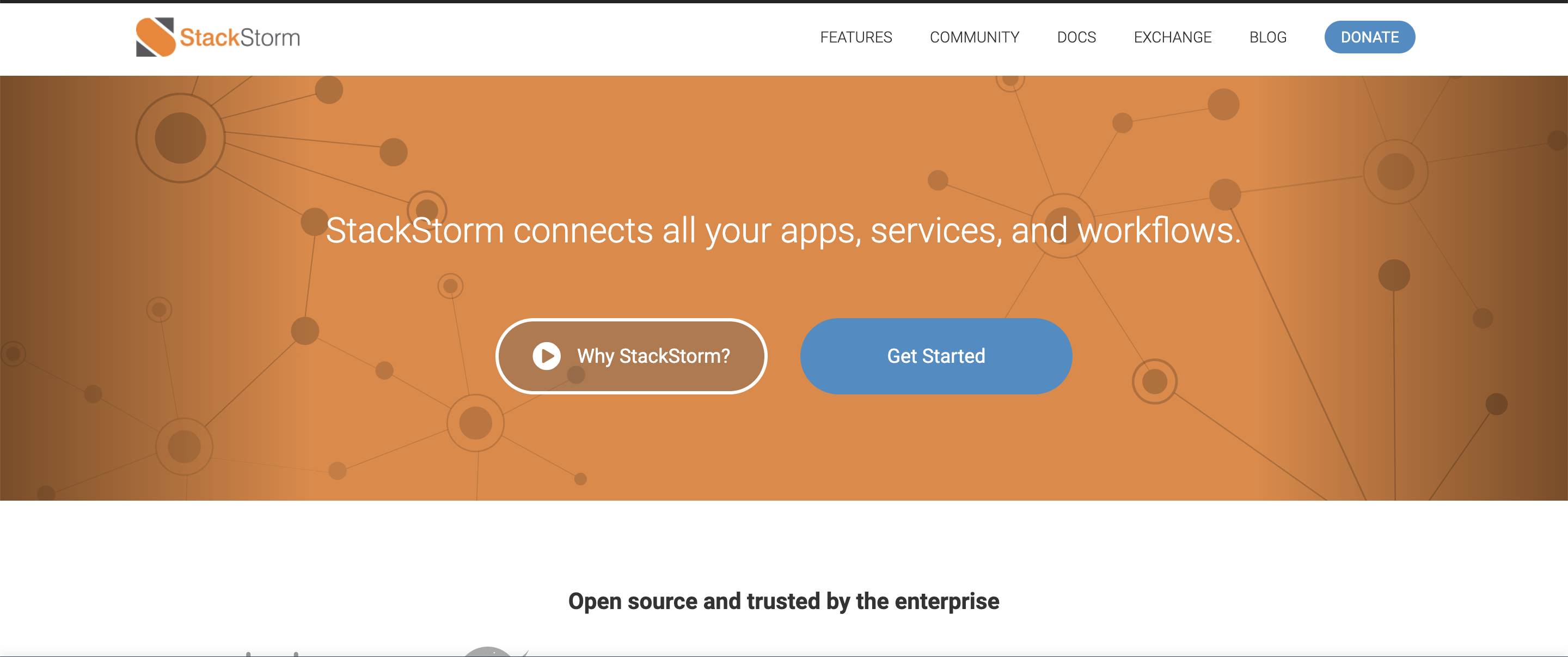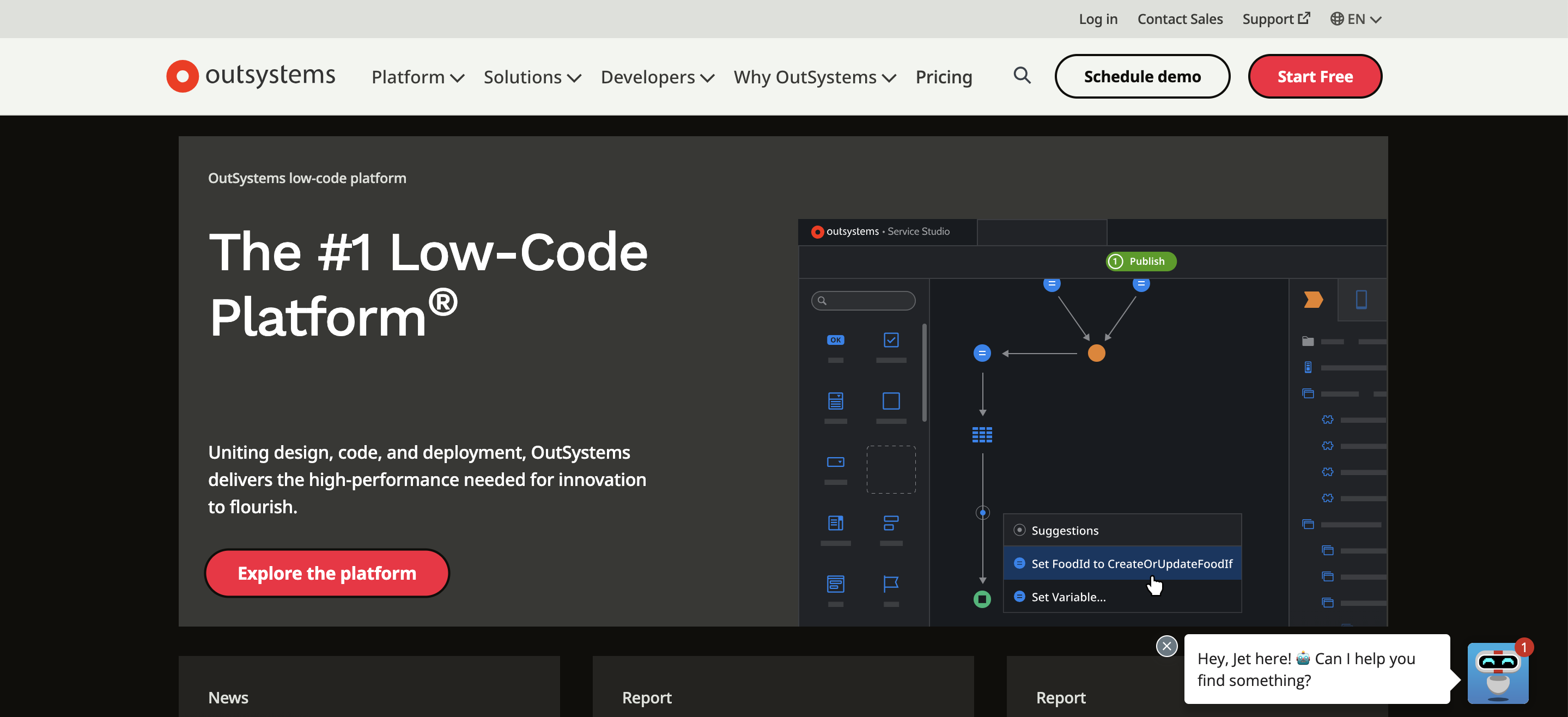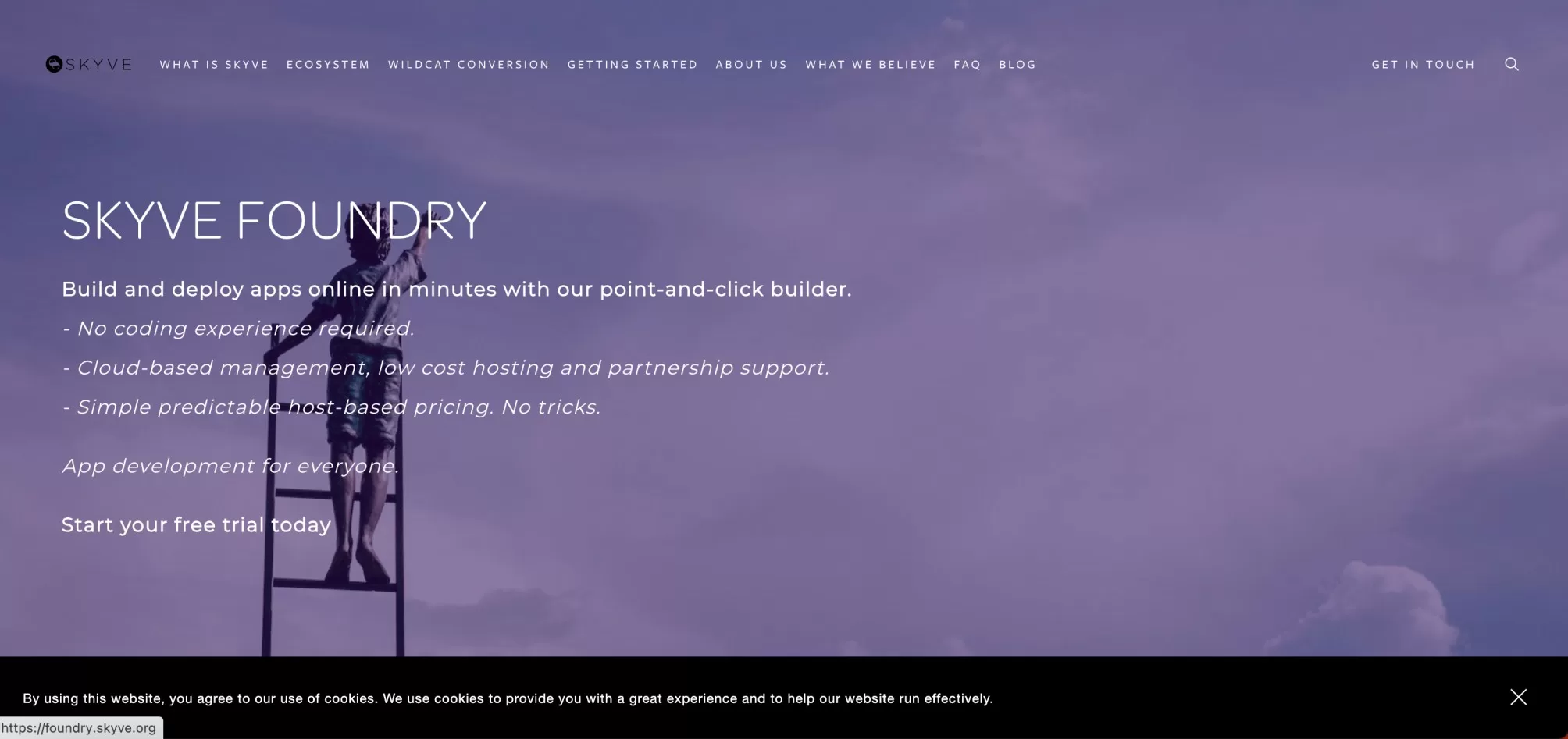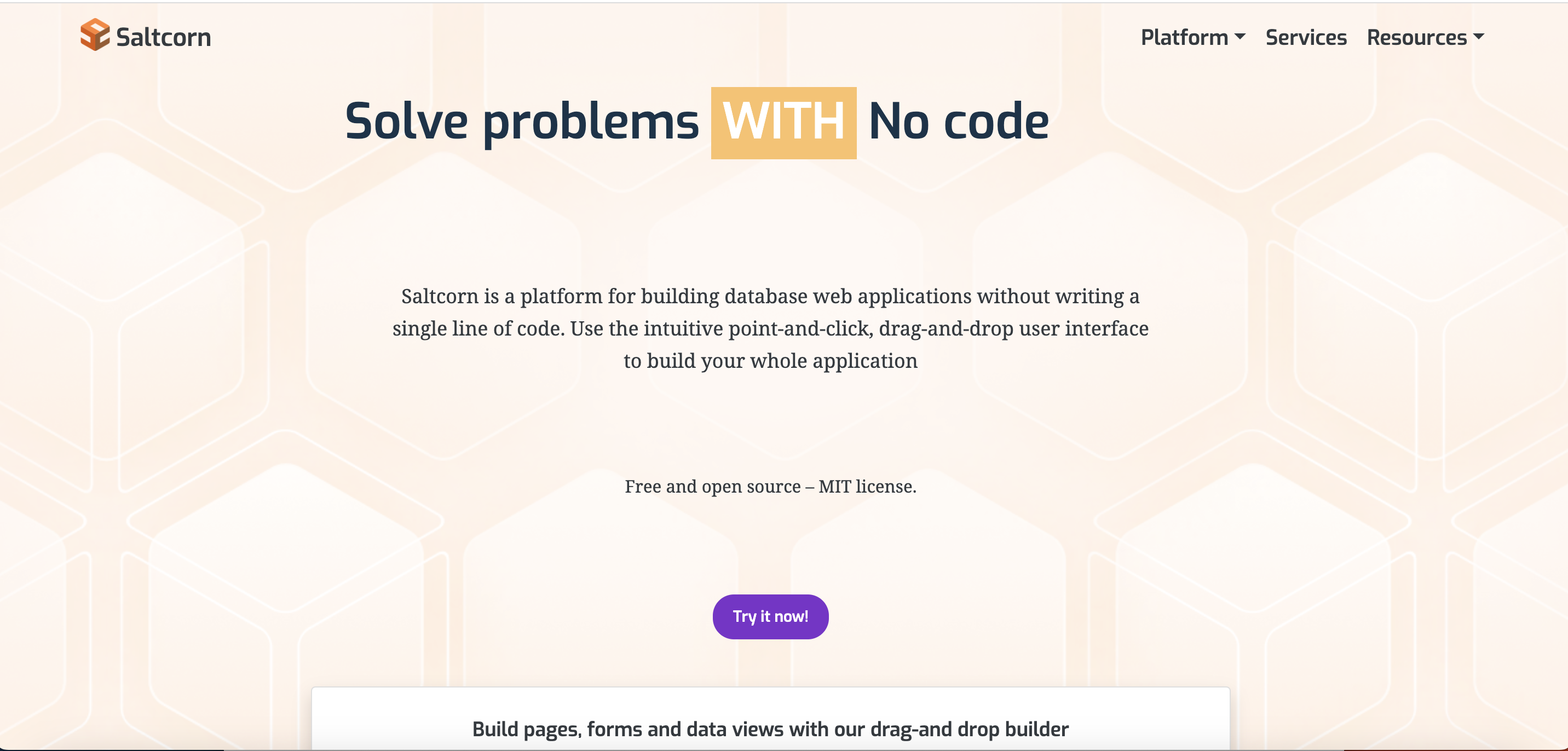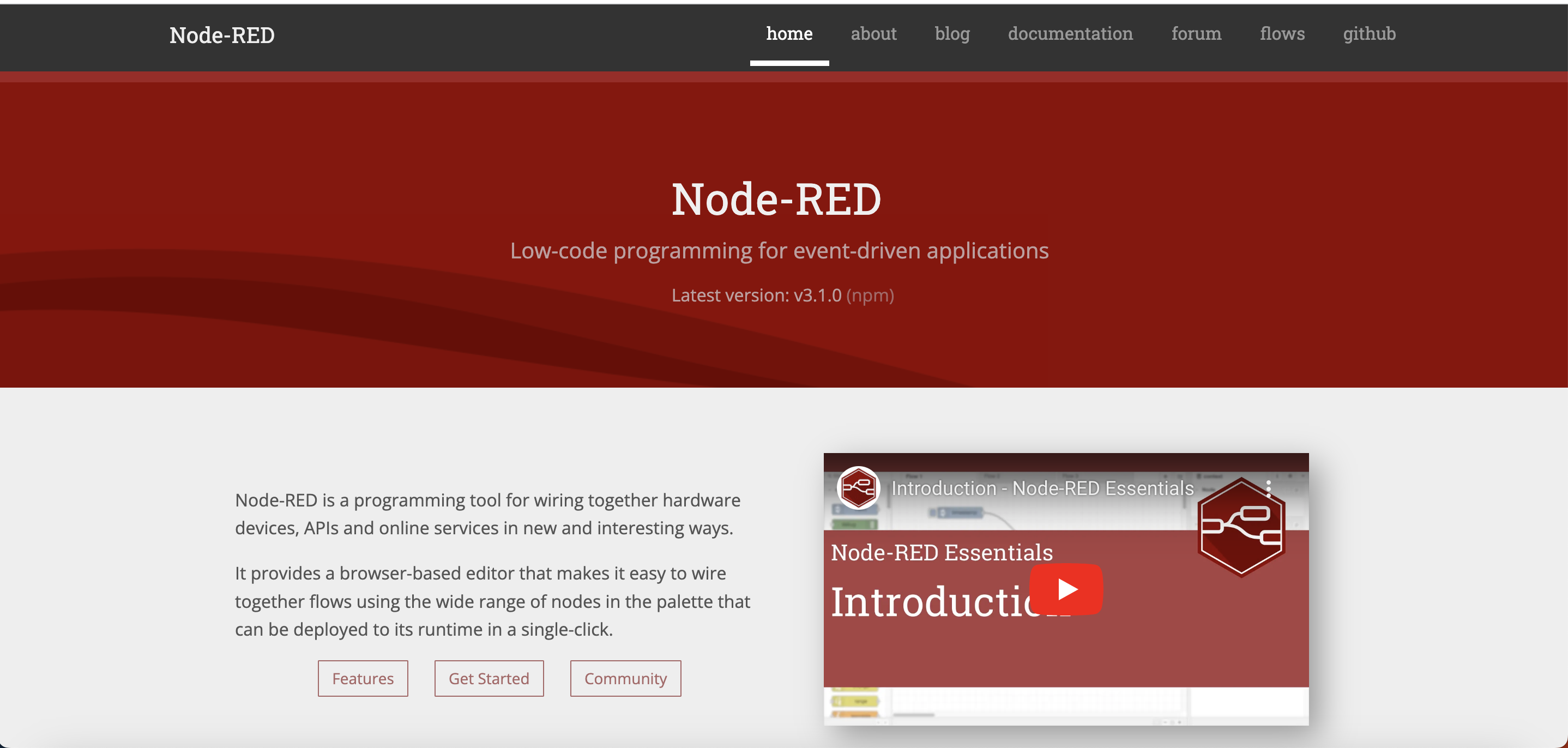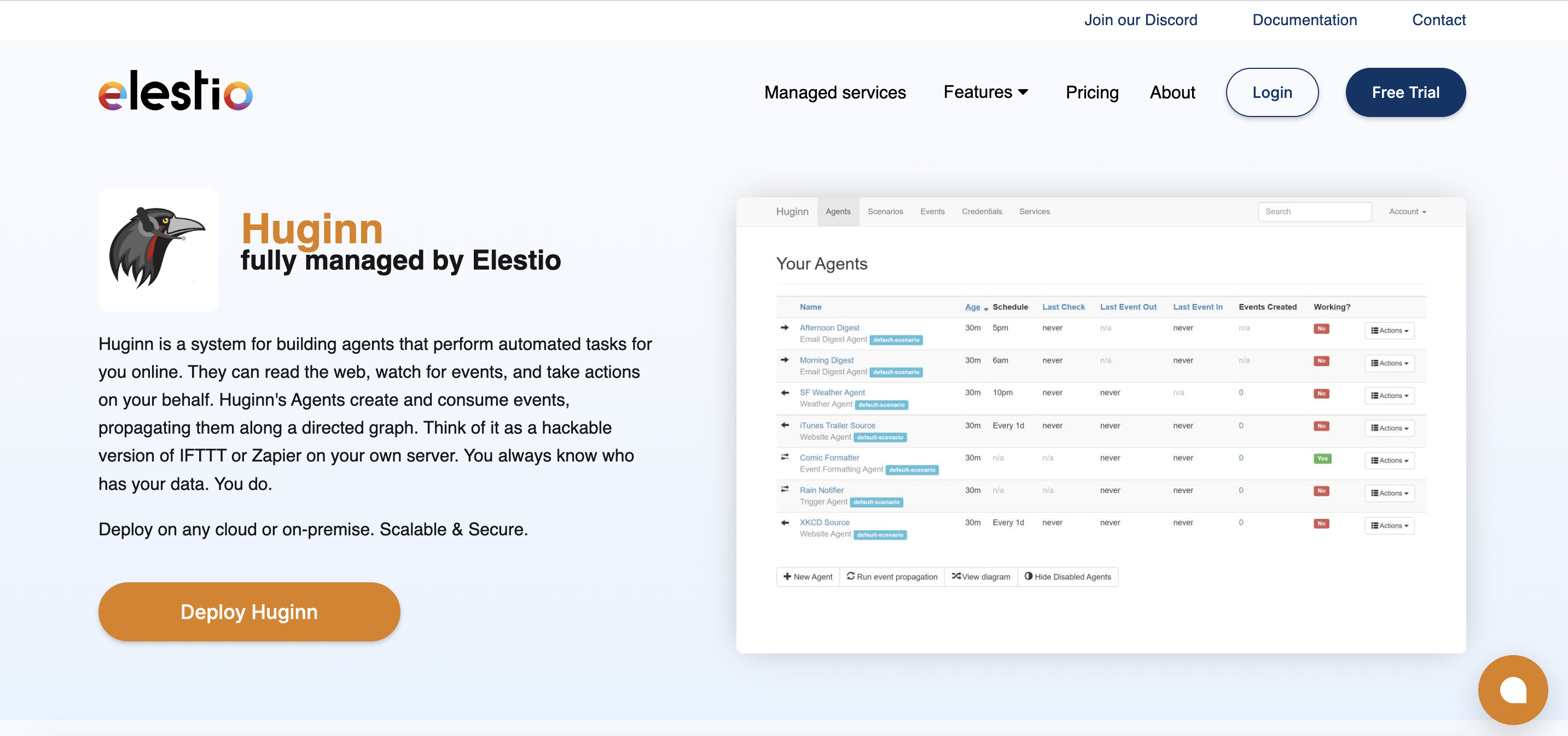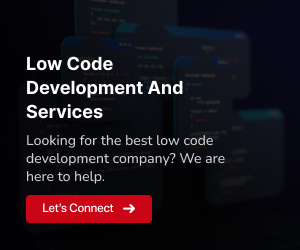Low-code development platforms have become a game-changer for enterprise businesses seeking rapid, cost-effective, and efficient application development solutions. These platforms offer a unique approach to software development by minimizing hand-coding efforts and allowing developers to create applications using visual interfaces and pre-built components. This paradigm shift has enabled enterprises to accelerate their digital transformation initiatives, respond faster to market demands, and reduce development costs significantly.
Open-source low-code platforms blend open-source software benefits with low-code development capabilities, benefiting large enterprises. They allow extensive customization and extension to meet specific needs, fostering collaboration between IT and non-technical teams. This collaboration accelerates application delivery, enhances communication, and aligns with business objectives. Additionally, these platforms provide robust security, scalability, and adaptability. Large enterprises find them suitable due to their extensive pre-built templates and integrations, streamlining development.
What are Open Source No-Code Platforms?
Open-source no-code platforms are innovative tools that enable users to develop software applications without the need for traditional coding. These platforms are distributed under open-source licenses, making them freely accessible and customizable by anyone. They offer a visual interface where users can design and configure applications by dragging and dropping pre-built components, eliminating the need for writing complex code.
One of the key advantages of open-source no-code platforms is their ability to democratize application development. They empower non-technical users and business professionals to participate actively in the creation of software solutions, fostering collaboration between IT departments and other business units. These platforms often come with a wide range of pre-designed templates and features, such as databases, forms, and workflow automation, making application development faster and more efficient.
By leveraging the power of open source, these platforms encourage community-driven development, enabling users to contribute enhancements, plugins, and extensions. This open collaboration leads to continuous improvement and innovation within the platform, ultimately benefiting a broader user base. Overall, open-source no-code platforms offer a cost-effective, accessible, and flexible approach to application development, making them a promising solution for a wide range of users and organizations.
Advantages of Open Source No-Code Platforms:
Accessibility
Open-source no-code platforms are designed to be user-friendly, allowing individuals without coding experience to create applications and democratize software development. This inclusivity empowers a broader range of employees to contribute to digital transformation efforts.
Rapid Development
These platforms accelerate the development process, reducing time-to-market for applications and enabling businesses to respond quickly to changing needs. This speed is crucial in today’s fast-paced business landscape.
Cost-Efficiency
Open-source software is typically free to use, reducing licensing and development costs. It also eliminates the need to hire expensive developers for simple applications, making it a cost-effective choice.
Customization
Users can customize applications to suit their specific requirements by adding or modifying components, ensuring the software aligns perfectly with business processes. This level of customization leads to highly tailored solutions.
Community Support
The open-source nature encourages a community of developers to contribute, providing a wealth of resources, plugins, and extensions for further functionality. This support network enhances the platform’s capabilities and fosters knowledge sharing.
Disadvantages of Open Source No-Code Platforms:
Limited Complexity
These platforms are best suited for simple to moderately complex applications. Highly intricate or specialized projects may require traditional coding. Complex workflows, unique business logic, or niche requirements may exceed the platform’s capabilities.
Vendor Lock-In
While the software itself is open source, some platforms may lock users into proprietary services or hosting options, limiting flexibility. Organizations should carefully consider the platform’s ecosystem to avoid future migration challenges.
Scalability Challenges
Scaling applications created on no-code platforms can be challenging, as they may not handle increased complexity or user loads well. Organizations must assess long-term scalability needs and potential bottlenecks.
Security Concerns
As open-source software is accessible to all, security vulnerabilities can be exposed and exploited if not properly maintained or updated. Rigorous security practices and continuous monitoring are essential to mitigate risks.

Top 10 Open-Source Low-Code Platforms for Enterprises
GeekyAnts
Geekyants, as an Open-Source Low-Code Platform for Enterprises, empowers organizations to streamline application development. With its open-source nature, it combines flexibility and customization, making it a versatile choice for large businesses. Geekyants facilitates collaboration between technical and non-technical teams, enhancing communication and aligning projects with business objectives. It boasts robust security, scalability, and adaptability, catering to the complex demands of enterprises. Additionally, Geekyants offers an extensive library of templates and integrations, expediting the development cycle and enabling organizations to swiftly deliver innovative solutions.
Convertigo
Convertigo is an open-source low-code platform that empowers businesses to develop and deploy enterprise-grade applications with speed and efficiency. This platform offers a visual development environment, pre-built templates, and a wide range of connectors to simplify application creation and integration. Convertigo enables organizations to streamline workflows, enhance customer experiences, and drive digital transformation without the need for extensive coding. With features like rapid prototyping, real-time collaboration, and scalability, Convertigo is a valuable tool for businesses looking to accelerate application development and stay competitive in the digital age.
NocoBase
NocoBase is a low-code and no-code platform that allows users to create and manage web applications and databases without extensive coding. It provides a visual interface for designing database schemas, creating user interfaces, and defining business logic. Users can build custom web applications, dashboards, and data-driven solutions with NocoBase, making it a versatile tool for various use cases.
Key features of NocoBase may include drag-and-drop functionality, data modelling, user authentication and access control, integration with other services, and support for building web applications with different data sources. Users with varying levels of technical expertise can benefit from NocoBase to streamline their application development processes.
NocoBase is part of the growing ecosystem of low-code and no-code platforms that empower individuals and organizations to create software solutions more efficiently and with reduced coding requirements. It aims to democratize application development by making it accessible to a broader audience, including non-developers and business users.
StackStorm
StackStorm is an open-source automation platform renowned for its event-driven and workflow automation capabilities. Designed to empower organizations in automating repetitive tasks, enhancing efficiency, and streamlining processes, StackStorm finds particular utility in DevOps and IT operations but is versatile enough for broader applications.
At its core, StackStorm revolves around event-driven automation. Users can set up triggers and rules that automatically initiate predefined workflows and actions in response to specific events. This feature is invaluable for real-time responses to system events and incidents.
One of StackStorm’s notable strengths lies in its extensive integration capabilities. It seamlessly connects with a wide array of commonly used IT tools and services, facilitating comprehensive automation across diverse systems. StackStorm’s extensibility enables users to create custom integrations and actions tailored to their unique requirements.
With an active community and an ecosystem of plugins and packs, StackStorm offers scalability and flexibility for organizations of varying sizes. Its monitoring and visibility features provide insights into automation workflows, ensuring effective tracking and issue resolution. Overall, StackStorm empowers businesses to optimize their processes, reduce manual efforts, and enhance operational efficiency.
OutSystems
OutSystems is a leading low-code application development platform known for its ability to streamline and accelerate the process of creating robust software applications. With OutSystems, organizations can build feature-rich web and mobile applications with significantly reduced coding efforts. Here’s a concise overview of OutSystems in 150 words:
OutSystems offers a visual, drag-and-drop interface that allows both developers and non-technical users to design, develop, and deploy applications rapidly. It provides an extensive library of pre-built templates and components, enabling developers to create user interfaces quickly. The platform emphasizes seamless integration with databases, APIs, and external services, simplifying the development of applications that interact with various data sources.
One of OutSystems’ standout features is its scalability, making it suitable for businesses of all sizes. It supports secure application development through features like role-based access control and encryption. Additionally, OutSystems provides robust analytics and monitoring capabilities to help organizations gain insights into application performance and user behaviour.
With its strong community support, comprehensive documentation, and professional assistance options, OutSystems is an ideal choice for organizations seeking to innovate, modernize legacy systems, and deliver digital solutions with speed and efficiency. Its versatility in building web and mobile apps empowers businesses to meet diverse user needs and stay competitive in the fast-paced digital landscape.
Skyve
Skyve is a powerful low-code development platform known for its rapid application creation and extensive customization capabilities. It offers a user-friendly visual development environment, enabling developers to quickly build robust business applications without extensive coding. Skyve excels in customization, allowing applications to align precisely with unique business processes. Its strong integration features facilitate seamless connections with databases, APIs, and third-party systems. The platform is cross-platform compatible, ensuring accessibility through web browsers and mobile devices. Skyve prioritizes data security with user authentication, role-based access control, and encryption. Supported by a vibrant community and ample resources, Skyve is a versatile choice for organizations aiming to accelerate application development while ensuring customization, integration, and security.
Saltcorn
Saltcorn is an open-source no-code platform that empowers users to create web applications without coding expertise. It provides an intuitive visual interface for designing, customizing, and managing applications. Saltcorn offers a wide range of pre-built components and templates, simplifying the development process for various use cases. Users can easily define data models, design user interfaces, and configure actions and workflows. Collaboration is enhanced through role-based access control, allowing teams to work together efficiently. While Saltcorn is ideal for rapidly building web apps, it may have limitations in handling highly complex or specialized projects. The platform encourages user contribution and offers community support for extending its capabilities. With a focus on accessibility, security, and scalability, Saltcorn is a valuable tool for businesses seeking to streamline application development and deployment.
Node-RED
Node-RED is an open-source flow-based development tool for visual programming. It provides a web-based, graphical interface that allows users to wire together devices, APIs, and online services in a straightforward and intuitive manner. Node-RED is often used for IoT (Internet of Things) applications, home automation, and building data-driven workflows.
Key features of Node-RED include a wide range of pre-built nodes, support for JavaScript functions, and extensibility through custom nodes and flows. Users can create and deploy flows that handle data transformation, device integration, and automation tasks. It also offers dashboard functionality for creating web-based user interfaces.
Node-RED’s versatility and ease of use make it a popular choice for developers and IoT enthusiasts. It simplifies the development process by eliminating the need for extensive coding, allowing users to focus on creating logic and functionality through a visual interface. The platform’s active community contributes to its growing library of nodes and plugins, making it a valuable tool for building a wide variety of applications.
Huginn
Huginn is an open-source system for building agents that automate tasks and perform various functions on the web. It is designed to help individuals create their own personal automation systems, often referred to as “personal assistants” or “digital butlers.” Huginn allows users to define agents that can monitor websites, track data, and perform actions based on specific triggers and conditions.
Key features of Huginn include its ability to create agents using a web-based interface, support for a wide range of data sources and outputs, and a visual “agent canvas” for designing complex workflows. Users can set up agents to perform tasks like monitoring social media, scraping data from websites, sending notifications, and more. Huginn is highly extensible, allowing users to create custom agents and adapt the system to their specific needs.
Huginn is a versatile tool that empowers individuals to automate and customize their online experiences, making it a valuable asset for personal productivity and data tracking. Its open-source nature fosters a community of developers who contribute to its growth and enhancement.
WordPress
WordPress, initially a renowned content management system (CMS), has grown into an adaptable low-code platform for web development. With its intuitive interface, users, even those with limited coding skills, can efficiently create and customize websites and web applications. WordPress offers a plethora of themes, templates, and plugins, streamlining the development process. These plugins often provide no-code or low-code solutions for various functionalities like forms, e-commerce, and SEO optimization. The platform’s extensive community support and resources further enhance its low-code capabilities. While not as robust as dedicated low-code platforms, WordPress is a valuable choice for simplified web development, bridging the gap between traditional coding and low-code solutions.
Endnote
Open-source low-code platforms have become invaluable tools for enterprise businesses seeking to streamline their application development processes. These platforms empower organizations to create customized software solutions with reduced coding requirements, significantly speeding up time-to-market. They offer flexibility, scalability, and cost-efficiency, making them suitable for a wide range of projects.
Moreover, open-source low-code platforms encourage collaboration and inclusivity, allowing non-technical stakeholders to actively participate in application development. The support of vibrant developer communities enhances the platforms’ capabilities and keeps them up-to-date with the latest trends.
However, it’s essential to consider the potential limitations, such as complexity restrictions, vendor lock-in, scalability challenges, security concerns, and the need for custom development in some cases. Overall, the availability of open-source low-code platforms offers enterprise businesses a competitive edge in the digital landscape, enabling them to innovate, adapt quickly, and meet their unique software needs effectively.









